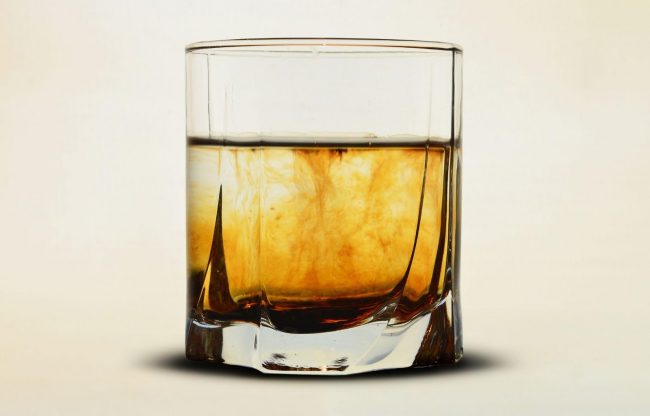
When you think of whiskey, you probably think of Mad Men era gentlemen, slowly sipping the fabled deep brown spirit in an ambient lounge, oozing sophistication and charming anyone that crosses their path. Drinking whiskey has been somewhat of a right of passage for men, from choking down the cheap stuff as young adults to appreciating the layers of a fine single malt as a man. But don’t make the mistake of excluding women. As more and more craft distilleries pop up every day, whiskey is losing the stereotype of just a drink for men in suits and is earning allure as a drink for all walks of life.
It can be an intimidating venture stepping into the complicated world of liquor so steeped in history. There’s a cornucopia of styles to choose from, and staring at a daunting wall of amber and brown bottles at a cocktail lounge can be dizzying. But fear not, fellow imbibers, by the time you finish reading this guide, you’ll be armed with the information you need to order your drink with confidence and impress your peers with your newfound knowledge.
How is whiskey made?
Whiskey is made from fermented grain mash and distilled in wooden casks. Many different styles are dependent on which country it is made in. Distilling time can vary greatly, and grains usually include barley, corn, rye, and wheat.
What’s in a name? (whiskey or whisky?)
Whiskey can be spelled two different ways. It just depends on the region. Ireland and the USA spell it whiskey, while Scotland, Canada, and Japan, drop the ‘e’ and call it whisky.
Even if you usually prefer a smooth Remy Martin VSOP, or a refreshing gin and tonic, there’s no hurt in upping your game and learning a little bit about whiskey as well. Let’s look at some of the different styles from around the world.
Irish Whiskey
Most people consider Ireland the granddaddy of whiskey, and its history can be dated back to the 6th century. Irish whiskey is usually light and smooth and doesn’t contain the peaty taste like its Scottish neighbor. Ireland has a variety of styles to be enjoyed.
Blended: As the name suggests, blended whiskey consists of more than one kind. It usually combines a single malt with other less expensive styles to create a lower-priced product. About 90% of Ireland’s whiskey production is blended.
Single malt: A single malt is made from 100% malted barley and comes from one distillery. It is typically the expensive stuff and made for sipping.
Grain: Grain whiskey refers to whiskey made from grains other than malted barley such as corn, wheat, or rye. It is usually lighter in style.
Single grain: A single grain must be made from a grain or mixture of grains and distilled in one distillery. It must also be aged for at least three years.
Scotch Whisky
The Scots are famous for their single malts, producing some of the finest in the world. Scotch single malts must be made from 100% malted barley and born in a single distillery. They are to be aged at least three years in oak casks, but many of the premium brands are aged much longer than that.
Aside from single malts, Scotland also produces blended malt whisky (100% malted barley from two or more distilleries), blended whisky (single malt combined with different grains such as corn or wheat), and single grain whisky (100% corn or wheat).
Scottish whiskies are also known for their peaty flavor. The barley is soaked early in the distillation process and then dried over burning peat, giving it a rich, smoky flavor.
American Whiskey
Home to the beloved bourbon, many consider this America’s gift to the rest of the world. However, before bourbon, the States were famous for their rye, and to this day, they produce some of the finest around. Luckily there’s no need to pick just one, as both can be enjoyed freely depending on your mood.
Bourbon:
Kentucky is the birthplace of bourbon, and most distilleries will be found in the South. To be considered bourbon, it must come from the US and be made with at least 51% corn. There are strict rules prohibiting additives and coloring, and all bourbon must be aged in charred oak barrels for a minimum of two years to be called straight bourbon.
Tennessee sour mash whiskey:
This is a specific type of bourbon that has its regulations. It must be made with 51-79% corn and filtered through maple charcoal before aging. This process gives it a unique sweetness, producing a distinct taste, separating it from regular bourbon.
Rye whiskey:
Rye whiskey must contain anywhere from 51-100% rye grain. There are no additives allowed, and it must be aged in oak barrels for a minimum of two years. Rye whiskey will taste a tad spicier and less sweet than your typical bourbon.
Canadian Whisky
Canadian whisky is considered light and smooth drinking. It is made primarily from corn or wheat, but rye and barley can be found as well. All whisky from Canada must be aged in oak barrels for three years at the minimum. Canada is famous for its blended whisky, which is a delicate process that produces the smooth taste that it’s known for.
Japanese Whisky
The Japanese have a knack for making everything better, and they are well on their way to doing that with their whisky game. They have modeled their process after Scotland and have a remarkably similar distillation routine as Scotch.
Japan has only been producing whiskey commercially since the 1920s, but you can find them on the awards lists at worldwide competitions every year. Not surprisingly, their whisky tastes similar to Scotland’s, and they are a serious up and comer to keep your eye on.
Conclusion
Now that you have a primer on different styles of whiskey from around the world, there’s only one thing left to do. Get out there and sample as many as possible. It won’t take long to tell the difference from bourbon to a Tennessee sour mash. Or a 12-year single malt from three-year rye. Your palate will keep getting better with practice, so drink responsibly, and enjoy the wonderful experience that whiskey provides.
